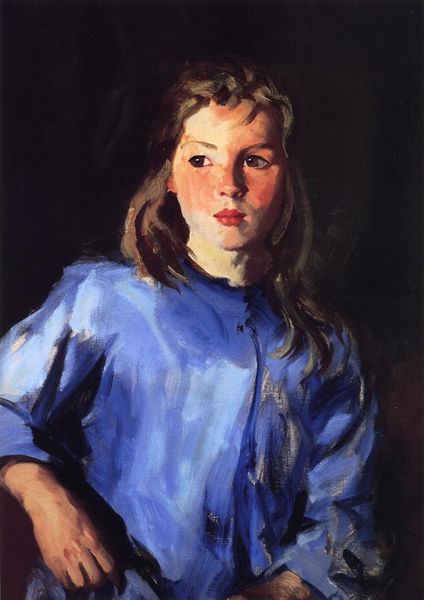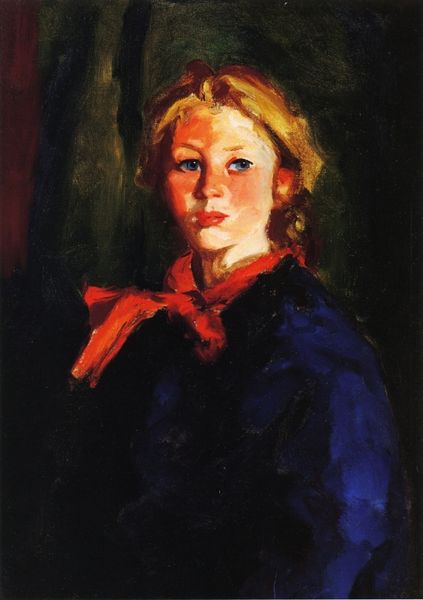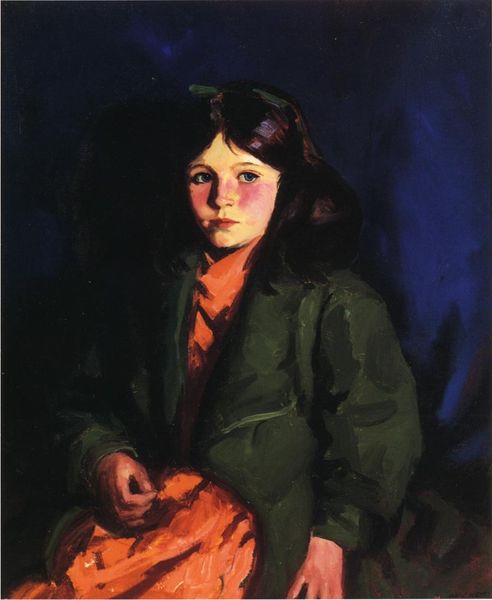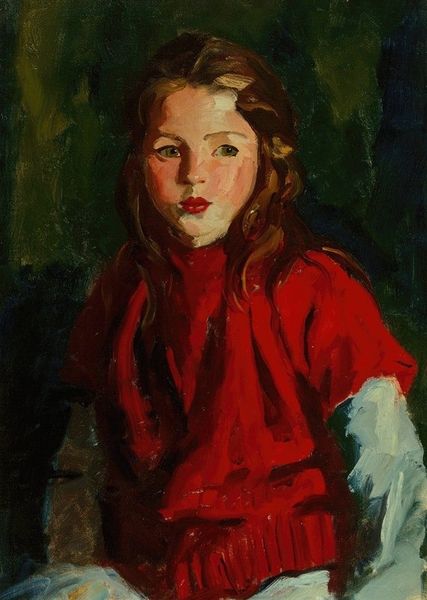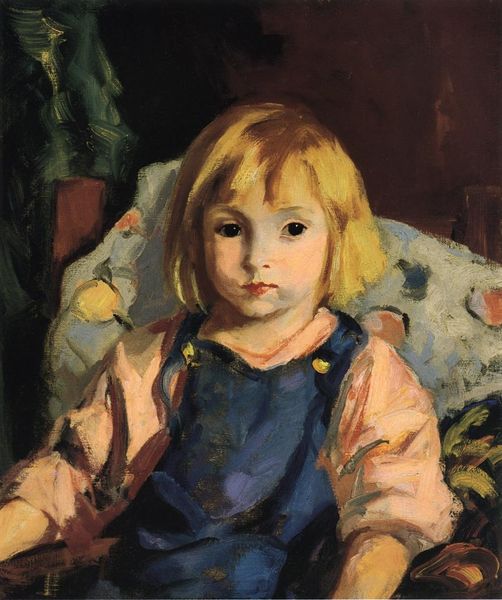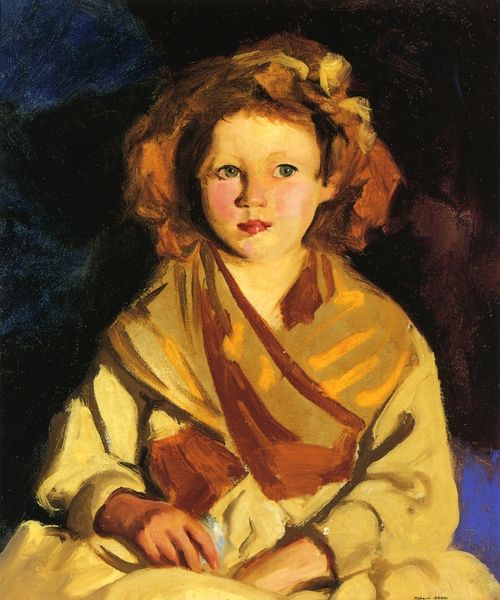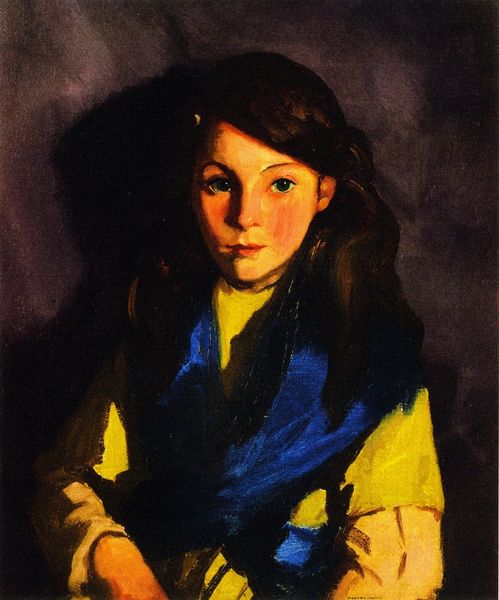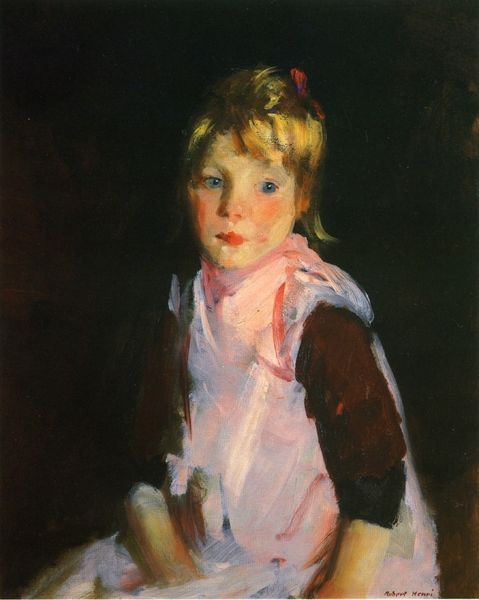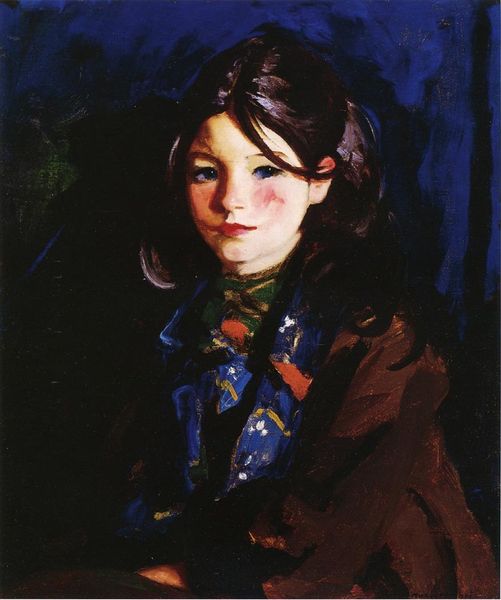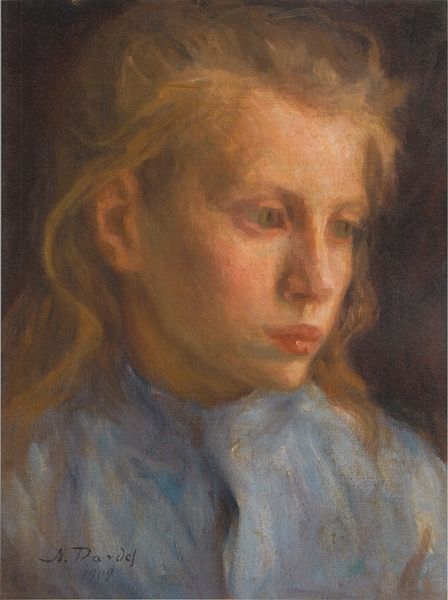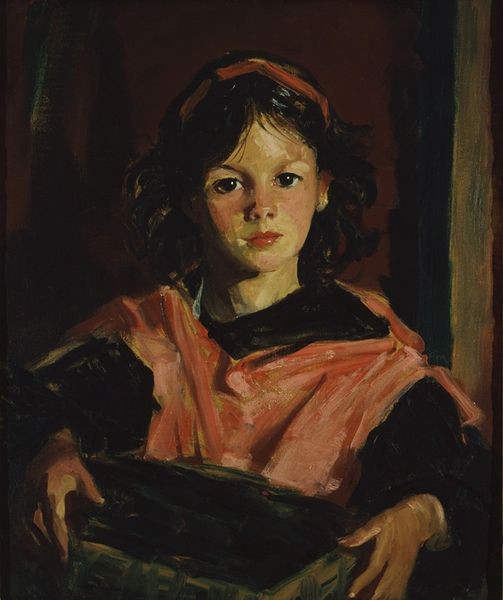
painting, oil-paint
#
portrait
#
painting
#
oil-paint
#
oil painting
#
ashcan-school
#
modernism
#
realism
Copyright: Public domain
Curator: Looking at this striking portrait by Robert Henri, completed in 1928, I find myself immediately drawn to the depth and humanity he captures in the subject’s eyes. It’s titled "Young Blond Girl, Corrymore Lass (Bridget Lavelle)." Editor: She’s so young, almost ethereally lit against that dark background. The color palette is quite subdued, yet the effect is anything but muted; I am getting a somewhat unsettling but poignant feeling, especially considering that so much darkness engulfs her in this oil painting. Curator: That darkness is key. Henri, a central figure of the Ashcan School, often portrayed working-class individuals, moving away from academic formalism. This portrait, like many of his, aims to capture the essence of a person rather than idealizing them. Bridget, the young girl depicted, appears against a stark, simple backdrop to focus attention on her expression. Henri found great significance in Irish children, which explains his multiple sojourns to Ireland. Editor: And what does that mean for the context of how we look at her? The "Corrymore Lass," the Irish identity here…are we talking about a romanticization or observation on the effects of the historical politics of labor and class? Her red cheeks and bright hair remind me of pre-Raphaelite figures— but then again the entire composition exudes a form of gritty realism. Is this just an example of exoticism or did he intend to use that background to show commentary on her class? Curator: It is difficult to tell his full intentions, however it is likely the artist aimed to simply show the truth that exists even in unfavorable socio-economic environments. These subjects interested him immensely. Editor: She also appears to have some kind of wooden tool. The lighting seems strategically employed, but, perhaps naively romantic, I feel he captured a true person there in her essence: almost in a photographic way, although the visible brushstrokes contradict that sentiment. Do we have evidence to suggest the child was asked for permission, or what was this process like in this era, in terms of cultural permissions, to be painted? Curator: Unfortunately, detailed records of the interactions between Henri and his models are scarce. However, it’s clear that Henri aimed to portray dignity and respect to individuals whom society has deemed outsiders. Editor: Ultimately, whether or not permission was obtained, and to Henri’s potential exploitation of the young subject, Henri provides the public an invaluable insight and historical access. Curator: The ambiguities really force a recognition of our biases, which I believe that, in itself, holds a lot of worth for this work. Editor: Exactly. The questions it generates about identity, representation, and agency are extremely relevant still to this day.
Comments
No comments
Be the first to comment and join the conversation on the ultimate creative platform.
